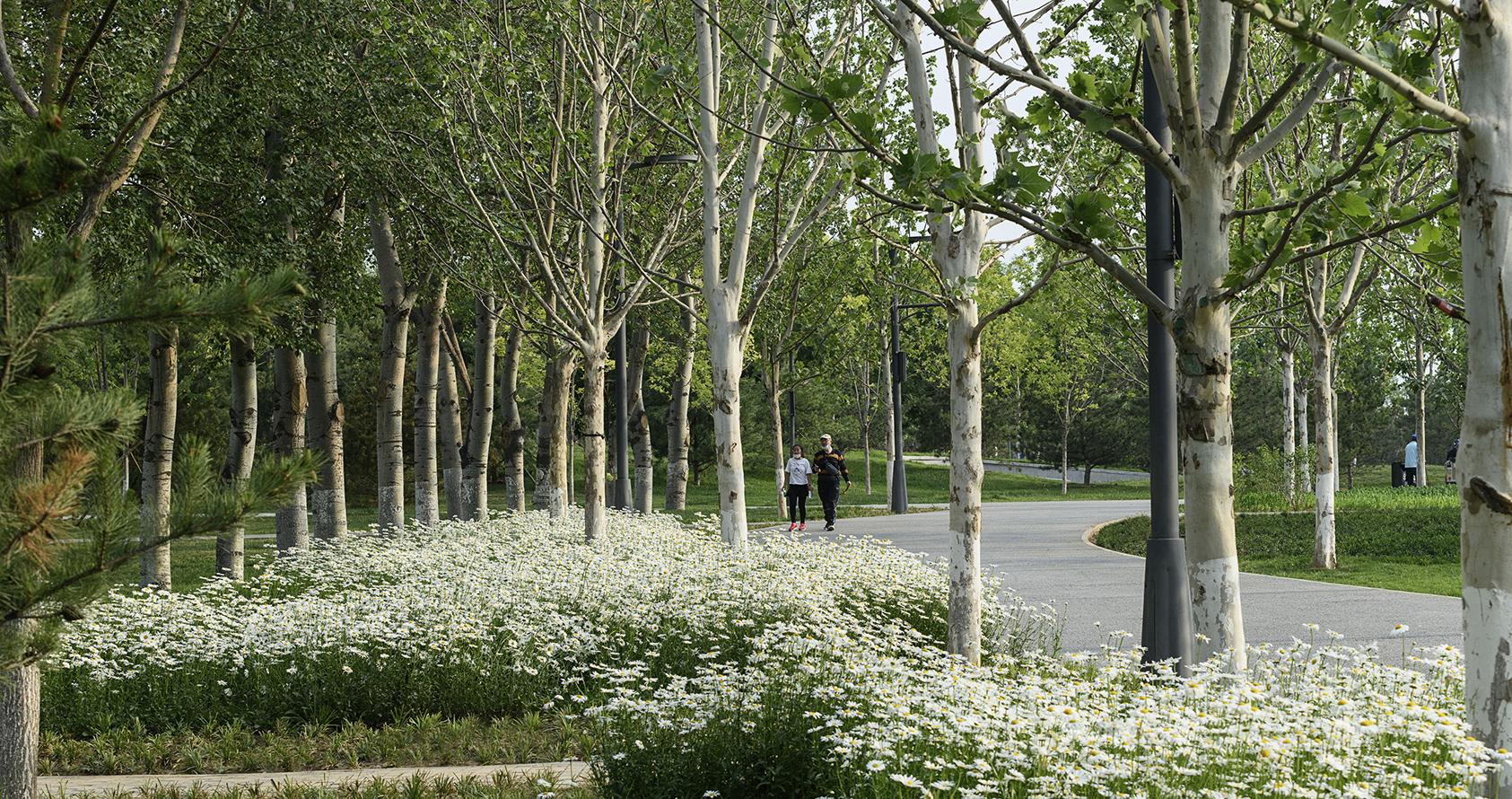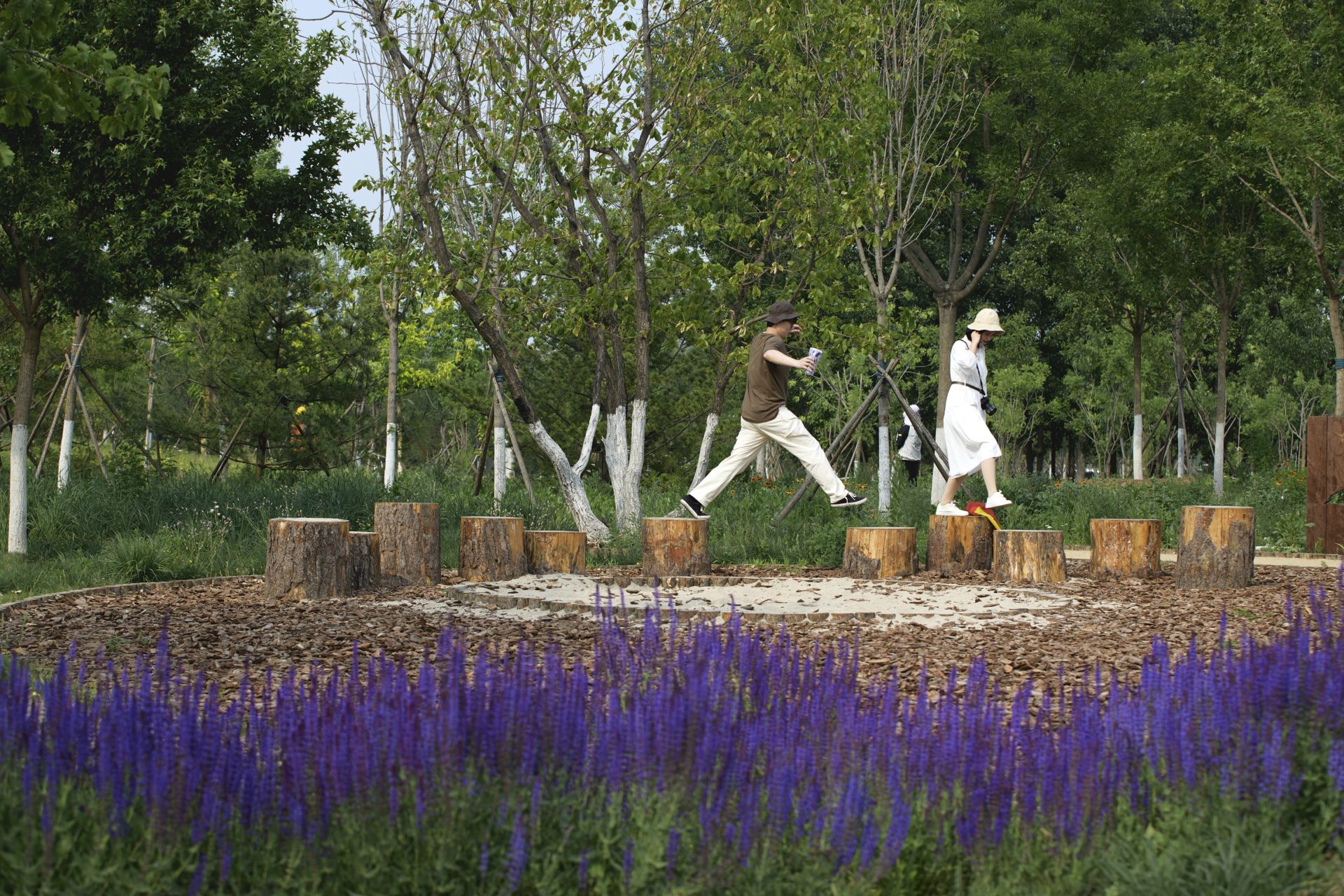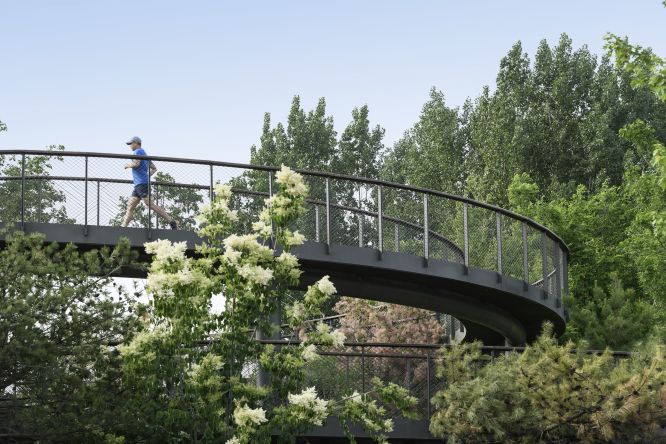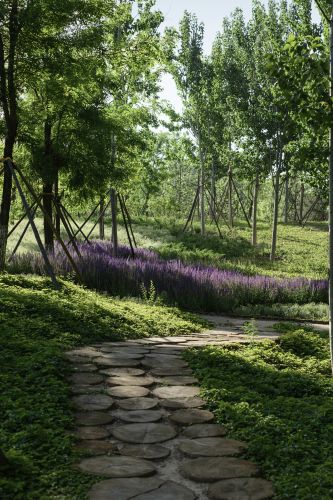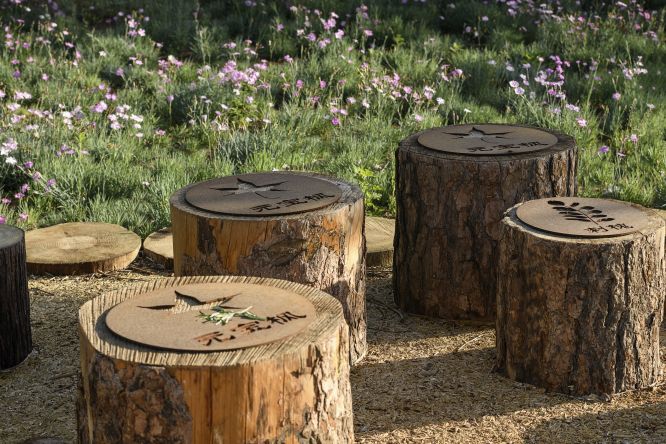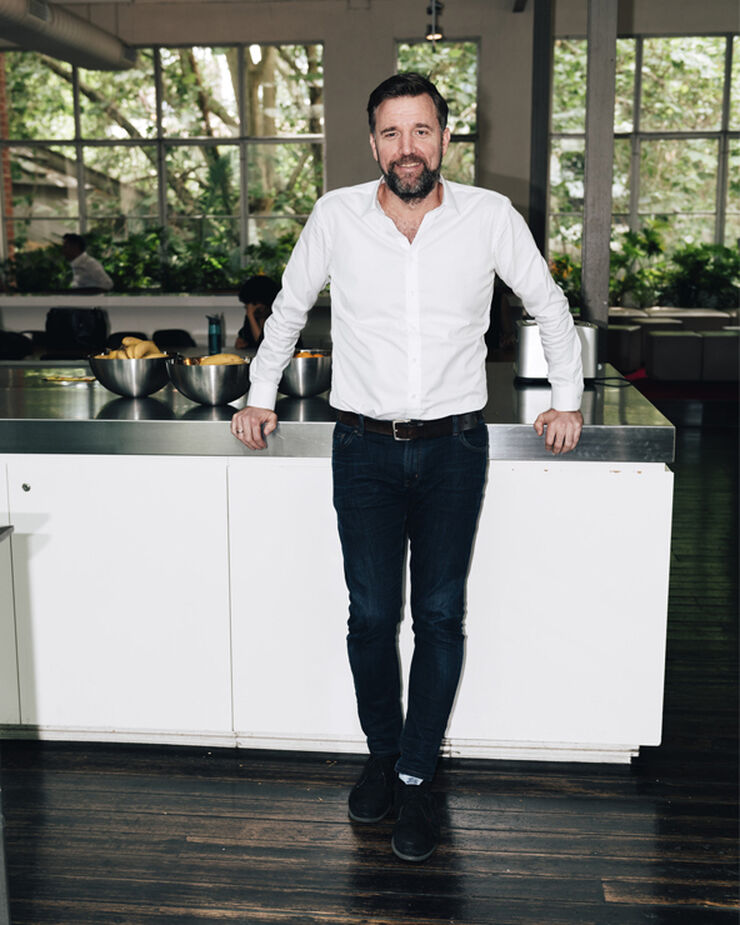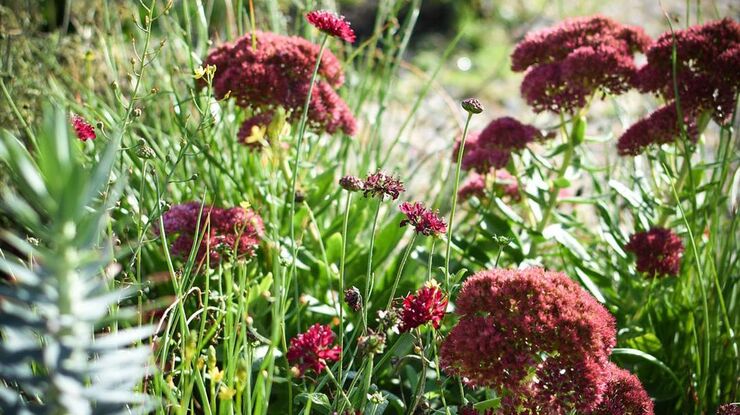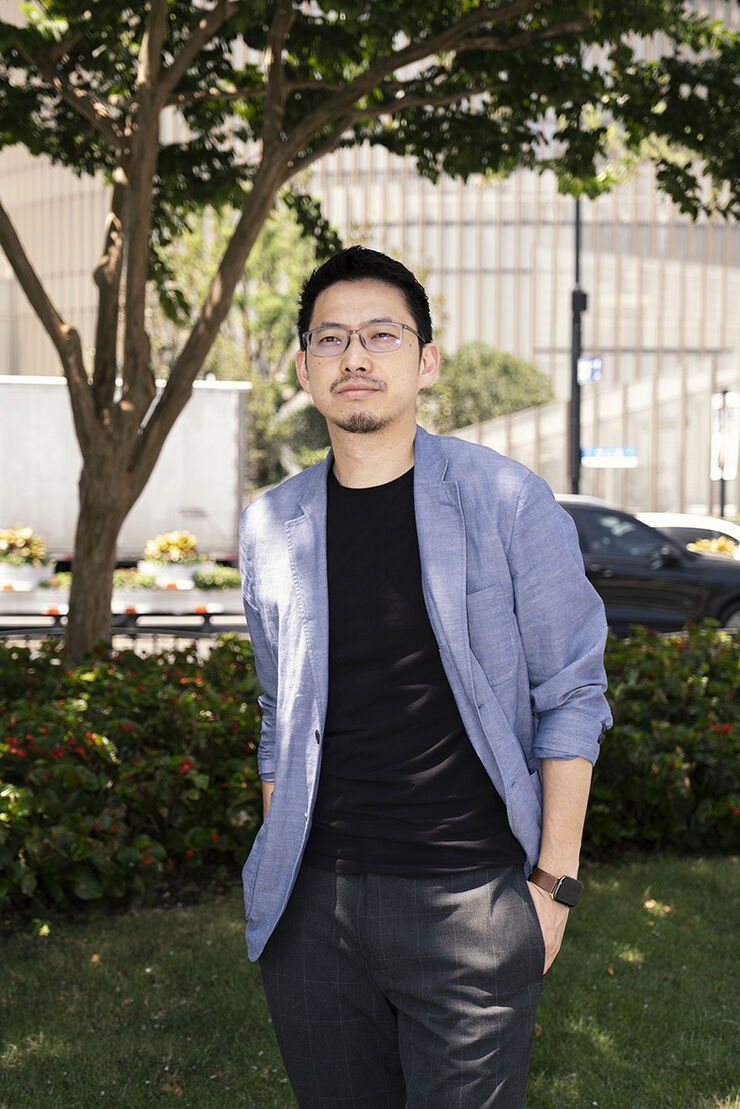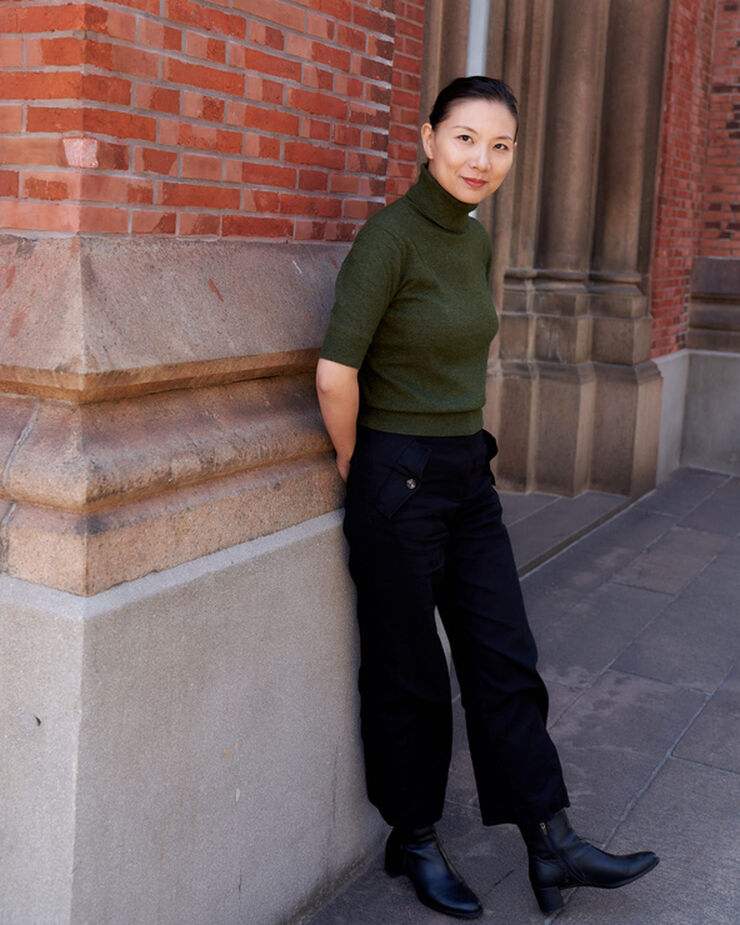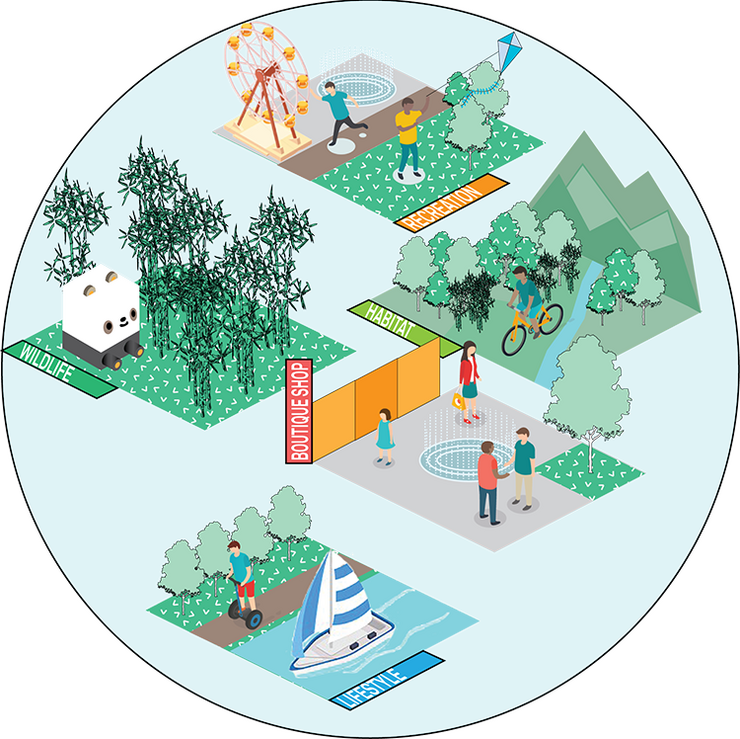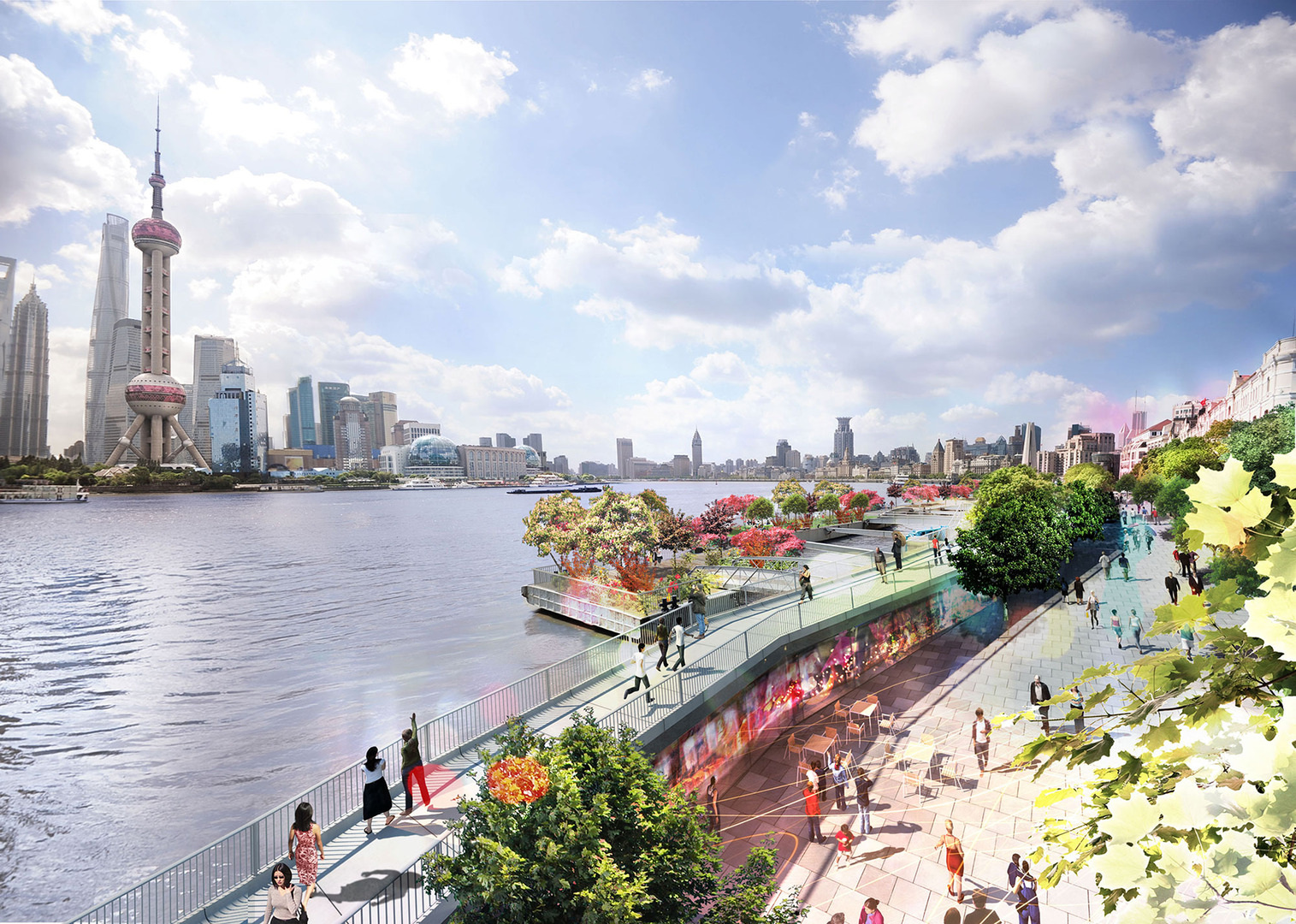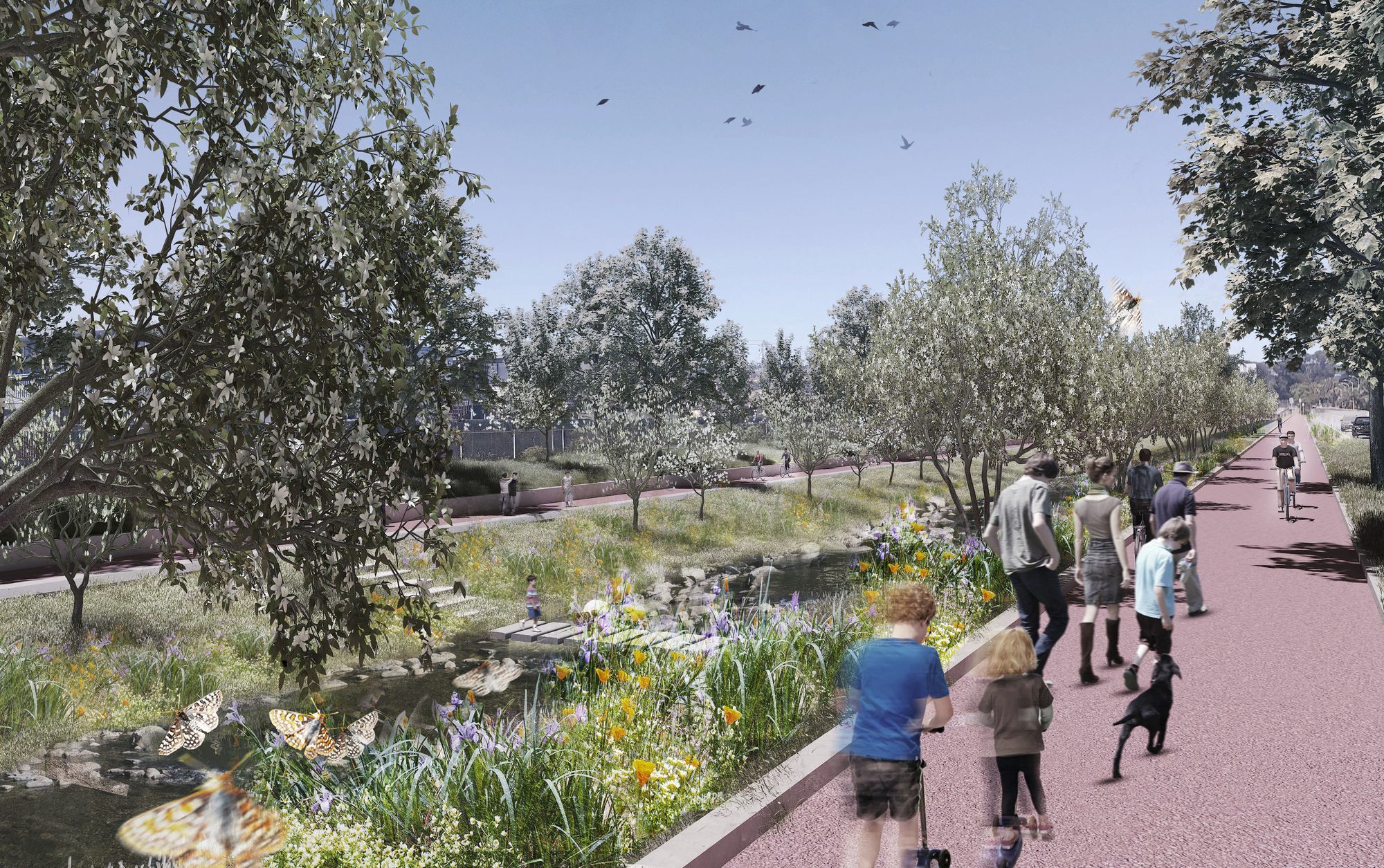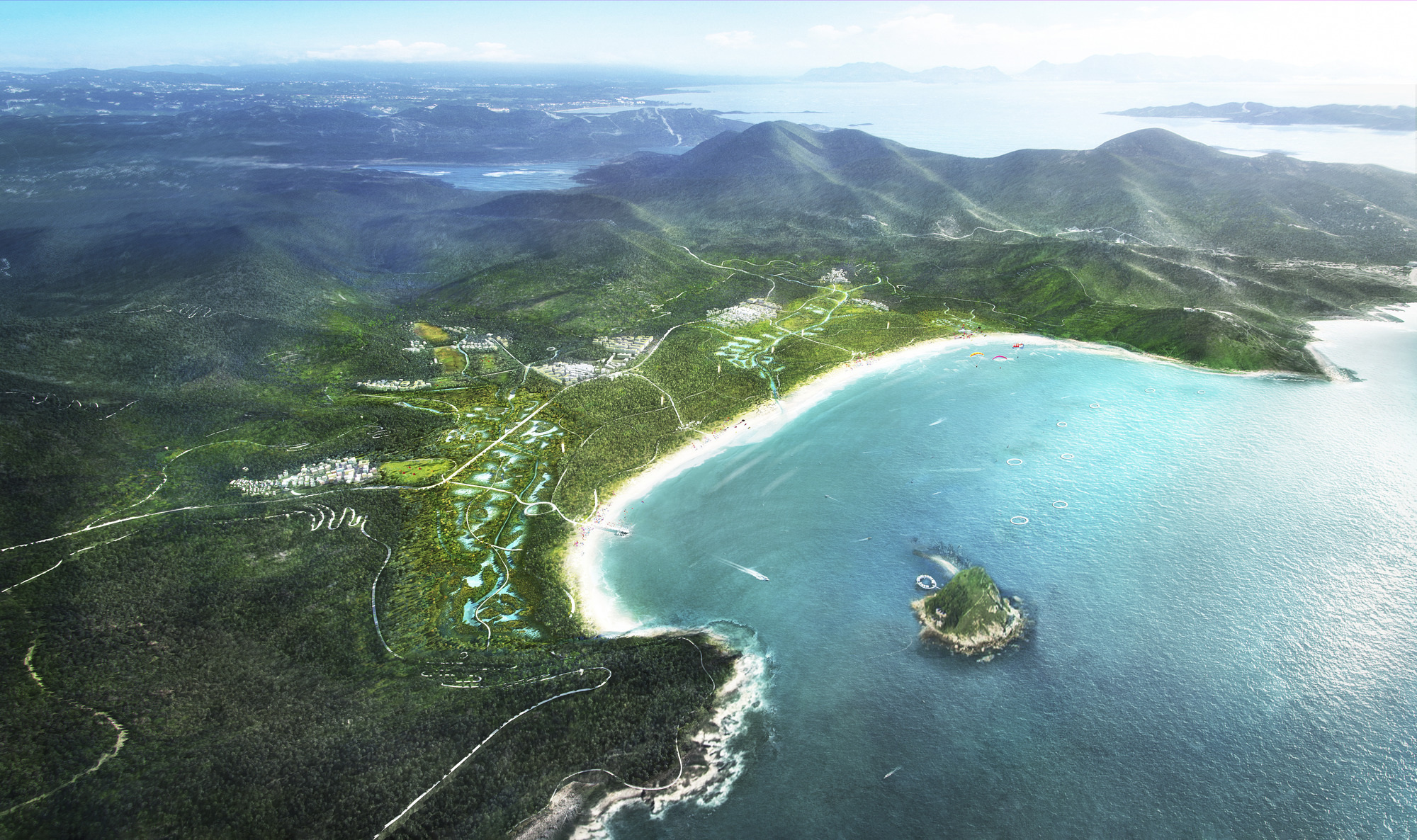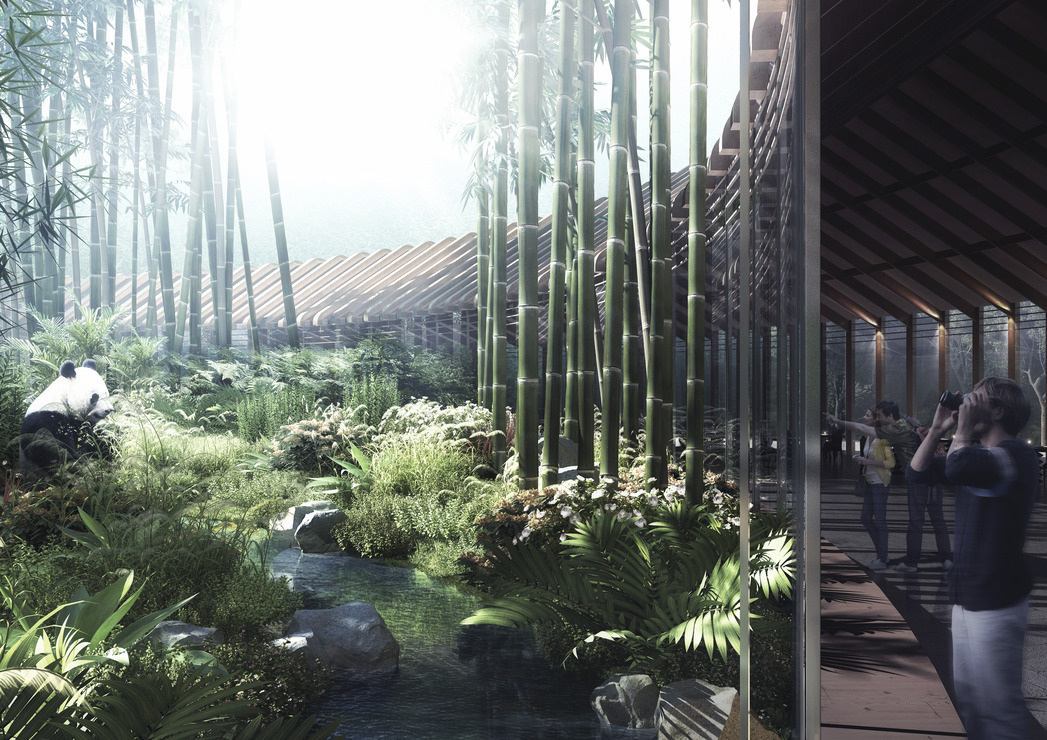Transformation by design
In the few years since its opening, Central Green Forest Park has delivered great ecological and cultural value, and helped created a unique identity for Tongzhou as a sub-centre of Beijing.
The master plan’s six-stage process has transformed the site from a heavily polluted brownfield industrial estate into an urban forest habitat that achieves 85% forest coverage and a self-sustained stormwater management system.
Stage 1: Identify soil contamination and topography
Stage 2: Recover an ancient canal tributary; heal and contain the soil
Stage 3: Compose a planning structure
Stage 4: Seed an arboretum — an outdoor museum of trees
Stage 5: Connect a diverse range of activities and experiences
Stage 6: Grow a multi-functional mosaic of forest rooms
Recovery of a canal tributary through the park contributes to water resource management. Our design optimises this natural drainage corridor for stormwater management and establishes marshes, wetlands and floating islands as unique habitats for animals and plants and micro habitats for aquatic animals and plants. The canal landscape and its shaded winding watercourses offer refreshing opportunities for visitors to meander in the embrace of nature.
As well as supporting the burgeoning Tongzhou administrative district of Beijing, this urban forest reconnects residents, workers and visitors with the Grand Canal. It’s a move that reasserts the importance of this historic trade route as a cultural landscape and focal point for the area.
Central Green Forest Park is now the “green lung” of the Tongzhou District, celebrating the value of time, the heritage of culture, and the wonder of nature.
Restoring nature
Four aspirations drove the design expression for Central Green Forest Park:
- Transform polluted post-industrial land
- Revitalise the site and rebuild cultural identity
- Create an adaptive and sustainable landscape system
- Promote forest succession and habitat restoration.
We developed four key design strategies to achieve these goals:
- Demolish, remediate and preserve
- Construct a large-scale dynamic forest framework
- Grow resilient landscapes
- Celebrate culture through an arboretum of 24 seasonscape forests.
Awards
- 2022 International Federation of Landscape Architects — Australia Asia Pacific and Middle East (IFLA AAPME): Award of Excellence
- 2022 Australian Institute of Landscape Architects (AILA) Awards: International Landscape Architecture Award
“Remarkably, this rich and diverse landscape has been achieved in three years, and has delivered great ecological and cultural value for its locality.”
— AILA Awards Jury
